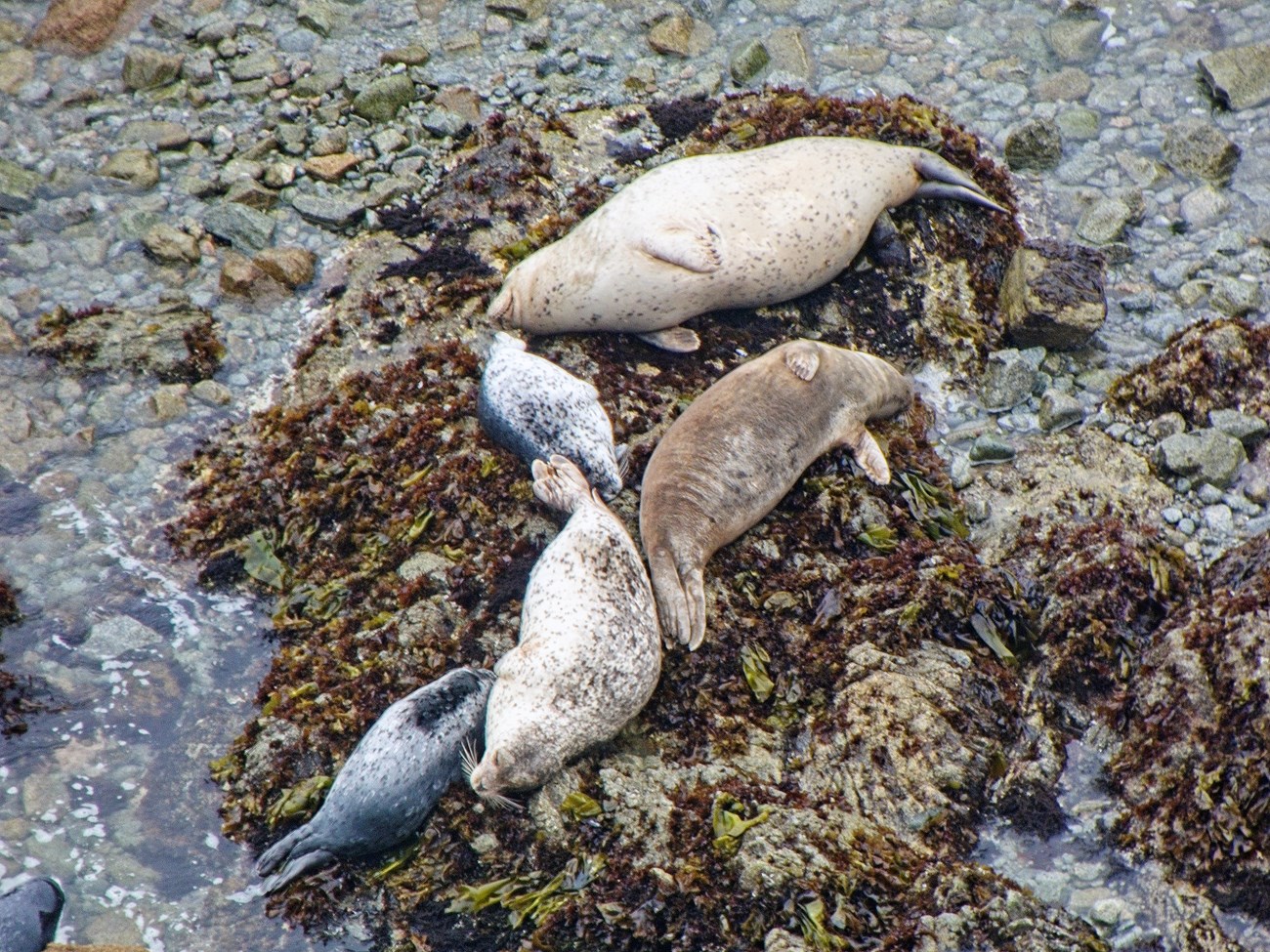Last updated: June 13, 2023
Article
Harbor Seal Monitors Find Below Average Pup Numbers at Marin County Sites in 2023
By Marine Ecologist Sarah Codde, San Francisco Bay Area Network Pinniped Monitoring Program

NPS / DAN RUSSELL
May 2023 - Visitors to Bay Area coastlines might spot cautious, curious harbor seals snoozing on rocks or sandbars any time of year. But annual harbor seal monitoring efforts focus on the pupping and molting seasons, from March to July. This is when the seals spend greater amounts of time hauled out of the water. With the 2023 pupping season peak now past, we have counted fewer pups than average across all Marin County haul out sites.
During the last few years, harbor seal monitors have seen an increase in coyote presence at harbor seal haul out sites. This has contributed to the decline in harbor seals we've recorded at Marin County locations. During the 2023 harbor seal pupping season, we saw fewer coyotes, but the number of seals is still low.
The peak of the pupping season was around the beginning of May, and we recorded about 910 pups across all of the Marin County monitoring locations. The long-term average is approximately 1,120 pups. Some locations were about average, like Bolinas Lagoon, Tomales Point, Point Reyes Headlands, and Point Bonita. Sites with below average numbers included Drakes Estero, Double Point, and Tomales Bay.
Many factors—not just coyotes—may be affecting harbor seal numbers in our Bay Area parks. Monitoring for years to come will help us learn more about how and why their population changes over time. This season, surveys will continue into July, as the seals haul out to molt their worn fur and grow gleaming new coats.
For more information
- San Francisco Bay Area Network Pinniped Monitoring webpage
- Pacific Coast Science & Learning Center Harbor Seals webpage
- Contact Marine Ecologist Sarah Codde
